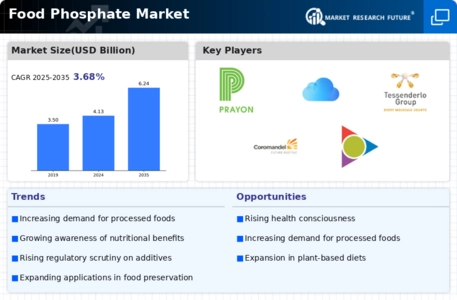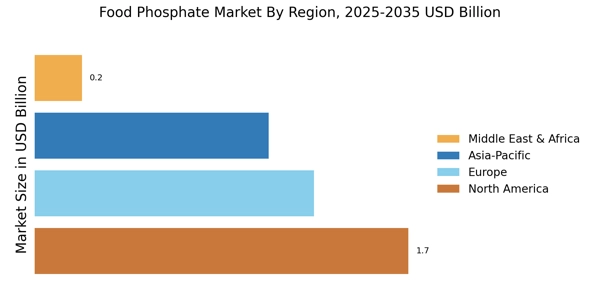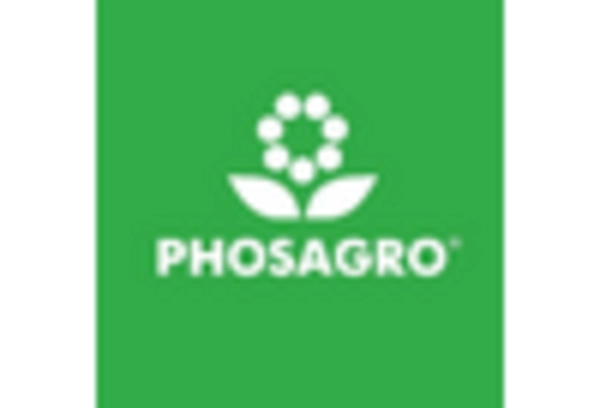Nutritional Fortification
Nutritional fortification is becoming increasingly prevalent in the Food Phosphate Market. As consumers become more health-conscious, there is a growing emphasis on enhancing the nutritional profile of food products. Food phosphates are often used to fortify products with essential minerals, such as calcium and phosphorus, which are vital for bone health. The market for fortified foods is expected to expand significantly, with estimates suggesting a growth rate of around 6% annually. This trend indicates a potential increase in the use of food phosphates, as manufacturers aim to meet consumer demands for healthier options. The Food Phosphate Market is likely to see a surge in applications related to nutritional enhancement, catering to the evolving preferences of health-oriented consumers.
Rising Demand for Processed Foods
The increasing consumer preference for convenience foods is driving the Food Phosphate Market. As lifestyles become busier, the demand for processed and ready-to-eat meals rises. Food phosphates play a crucial role in enhancing the texture, flavor, and shelf life of these products. According to industry reports, the processed food sector is projected to grow at a compound annual growth rate of approximately 4.5% over the next few years. This growth is likely to bolster the demand for food phosphates, as manufacturers seek to improve product quality and consumer satisfaction. The Food Phosphate Market is thus positioned to benefit from this trend, as phosphates are essential in various applications, including meat products, Seafood, dairy, and baked goods.
Regulatory Support for Food Safety
Regulatory frameworks aimed at ensuring food safety are influencing the Food Phosphate Market. Governments and health organizations are increasingly recognizing the importance of food additives, including phosphates, in maintaining food quality and safety. Regulations that support the use of food phosphates in various applications can enhance consumer confidence and drive market growth. For instance, the approval of specific phosphate compounds for use in food products can lead to increased adoption by manufacturers. This regulatory support is crucial, as it not only legitimizes the use of food phosphates but also encourages innovation in product development. The Food Phosphate Market stands to benefit from these supportive measures, as they facilitate the introduction of new and improved food products.
Consumer Awareness of Food Ingredients
There is a growing consumer awareness regarding food ingredients, which is impacting the Food Phosphate Market. As consumers become more informed about what they eat, they are increasingly scrutinizing food labels and ingredient lists. This trend has led to a demand for transparency in food production, including the use of food additives like phosphates. While some consumers may express concerns about synthetic additives, the role of food phosphates in enhancing food safety and quality is often overlooked. The Food Phosphate Market may need to address these concerns through education and marketing strategies that highlight the benefits of phosphates. As awareness continues to rise, manufacturers may find opportunities to innovate and reformulate products to align with consumer preferences.
Technological Innovations in Food Processing
Technological advancements in food processing are reshaping the Food Phosphate Market. Innovations such as improved mixing and emulsification techniques allow for more effective incorporation of food phosphates into various products. These technologies enhance the functional properties of phosphates, leading to better texture, moisture retention, and flavor enhancement. The food processing sector is expected to invest heavily in these technologies, with projections indicating a growth rate of around 5% in the coming years. This investment is likely to drive demand for food phosphates, as manufacturers seek to optimize their production processes and improve product quality. The Food Phosphate Market is thus poised to benefit from these technological developments, which may lead to new applications and increased market penetration.


















Leave a Comment